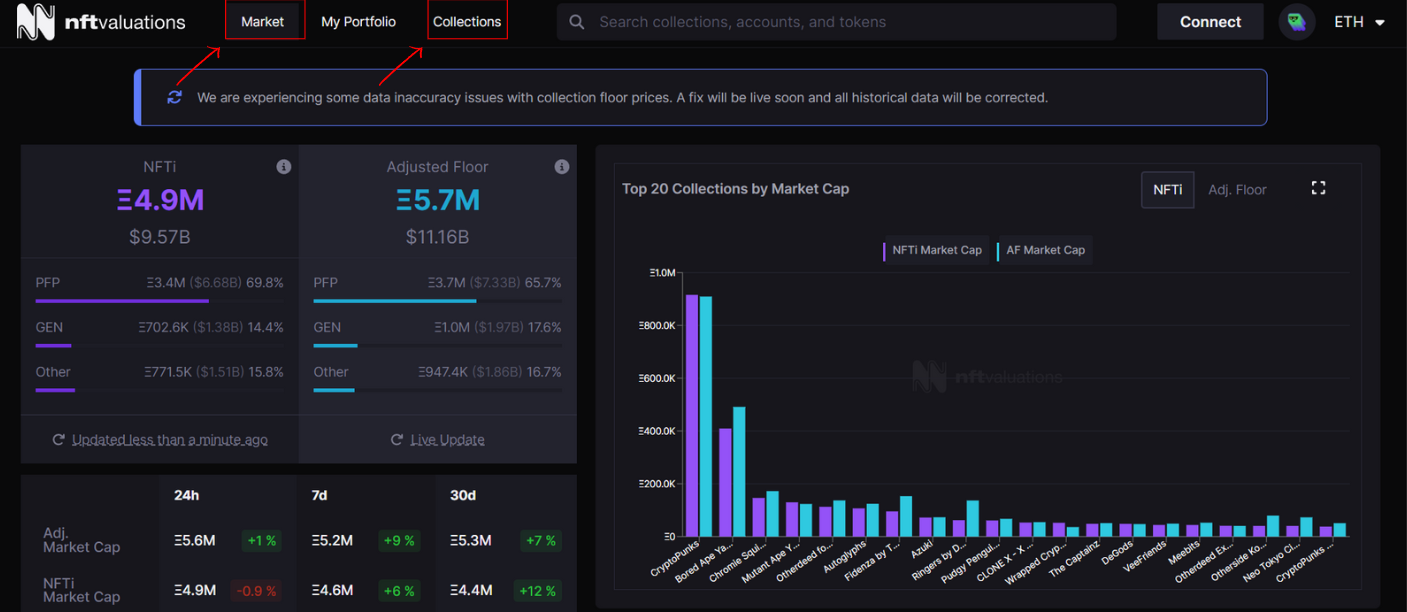New feature: Rarities

A new week with a new feature integrated into our platform!
We're thrilled to introduce 'Rarities,' a robust new tool that lets you easily filter through your favorite NFT collections.
This addition takes your browsing experience to the next level, allowing you to discover just how rare and special each NFT might be.
'Rarities' is all about empowering you with the insights needed for smarter decision-making in the NFT market.
Our varied methods enrich each aspect of your interaction with our app, ensuring that whether you're browsing or buying, you do so with increased knowledge and ease.
In order to access the new 'Rarities' feature, all you have to do is find any collection of your choice, either through our 'Market' general page as you scroll down or on a dedicated page in the 'Collections' section.

Now that you've found your desired collection, you might be wondering, 'Where is the new feature?'
Let us guide you through it:
As we mentioned earlier, and as demonstrated in the video, we offer a variety of methods for assessing rarities, let's explore them together.
- Rarity Score: Each trait’s score is calculated as a ratio of the number of tokens in the collection to the number of tokens sharing a trait. Then each NFT’s score is calculated by adding all these scores. The higher the score, the rarer the token.
- Statistical Rarity: Each trait’s score is calculated as a ratio of the number of tokens sharing a trait to the number of tokens in the collection. For each NFT, its trait scores are then multiplied together to get its corresponding score. The lower the score, the rare the token.
- Single Trait Rarity: Each trait’s score is calculated as a ratio of the number of tokens sharing a trait to the number of tokens in the collection. The lowest (rarest) trait of an NFT is then picked to represent its rarity score. The lower the score, the rare the token.
- Average Rarity: Each trait’s score is calculated as a ratio of the number of tokens sharing a trait to the number of tokens in the collection. For each NFT, its trait’s average score is used for ranking. The lower the score, the rare the token.
- Quantity Rarity: This is currently an option only for ERC1155 collections as their properties may be too diverse and not helpful with rarity. It’s simply based on the number of quantities in circulation. For collections like 6529 Memes that are like card collections, tokens with fewer quantities are rare.
However, each one of the above can be modified to use various options:
- Trait Normalization: This goes beyond the base scoring formula and with respect to the aggregation method of each, it will normalize to make the scores more relevant and fairer compared to other traits.
- Burnt Tokens: Including burnt tokens will provide original rarity scores as opposed to excluding them which will reflect the current state of rarities in a collection. (For Quantity Rarity, the only available option is including burnt tokens.)
- Synthetic Properties: Some collections are further refined by having additional properties introduced in collaboration with experts in the field.
- Trait Count: Enabling this will add a pseudo property for calculations that would have the number of existing traits as its value.
In Conclusion
As with any new release, we anticipate some issues and welcome your valuable feedback. We'll actively monitor our Twitter and Discord channels to promptly address concerns. If you haven't already, follow us on Twitter and join our Discord community! We're eager to hear your thoughts on this release and NFT valuations. 💜
